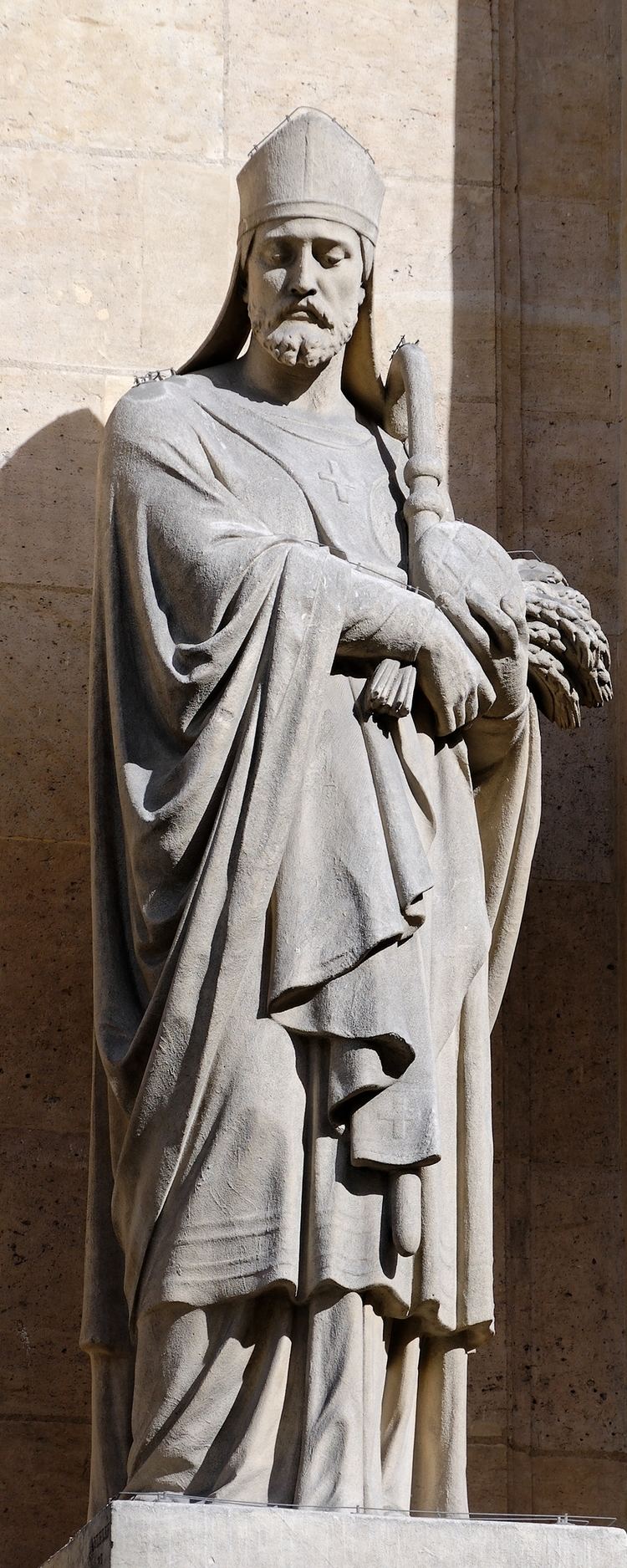Feast 16 May | ||
 | ||
Venerated in Roman Catholic ChurchEastern Orthodox Church Attributes baker's peel or shovel; bishop with a large Host; bishop with three Hosts on a baker's shovel; loaves; prelate with a hand reaching from heaven to give him bread for the Mass Patronage bakers, confectioners, bakers of altar bread, candle-makers, florists, flour merchants, corn chandlers, oil refiners, and pastry chefs Died 16 May 600 AD, Port-le-Grand, France | ||
Saint Honoratus of Amiens (Honoré, sometimes Honorius) (d. 16 May ca. 600[1]) was the seventh bishop of Amiens. His feast day is 16 May.
Contents
Life
He was born in Port-le-Grand (Ponthieu) near Amiens to a noble family. He was said to be virtuous from birth. He was taught by his predecessor in the bishopric of Amiens, Saint Beatus (Beat). He resisted being elected bishop of Amiens, believing himself unworthy of this honor. According to hagiographic tradition, a ray of light of divine origin descended upon his head upon his election as bishop. There also appeared holy oil of unknown origin on his forehead.
According to a legend, when it was known in his hometown that he had been proclaimed bishop, his nursemaid, who was baking bread for the family, refused to believe that Honoratus had been elevated to such a position. She remarked that she would believe the news only if the peel she had been using to bake bread put down roots and turned itself into a tree. When the peel was placed into the ground, it was transformed into a mulberry tree that gave flowers and fruit. This miraculous tree was still being shown in the sixteenth century.
During his bishopric, he discovered the relics of Victoricus, Fuscian, and Gentian, which had remained hidden for 300 years.
Veneration
His devotion was widespread in France following reports of numerous miracles when his body was exhumed in 1060.
After his death, his relics were invoked against drought. Bishop Guy, son of the Count of Amiens, ordered that a procession be held, in which an urn holding Honoratus' relics were carried around the walls of the city. Rain is said to have fallen soon after. In 1240, during construction of the cathedral of Amiens, the relics of Honoratus were carried through the surrounding countryside in a quest for funds.
In 1202, a baker named Renold Theriens (Renaud Cherins) donated to the city of Paris some land to build a chapel in honor of the saint. The chapel became one of the richest in Paris, and gave its name to Rue du Faubourg Saint-Honoré. In 1400, the bakers of Paris established their guild in the church of Saint Honoratus, celebrating his feast on 16 May and spreading his cult.
He is also the patron of a Carthusian establishment at Abbeville, which was founded in 1306.
In 1659, Louis XIV ordered that every baker observe the feast of Saint Honoratus, and give donations in honor of the saint and for the benefit of the community.
He is the namesake of the St. Honoré Cake.
A statue of Honoratus stands in the portal of Amiens Cathedral.[2]
